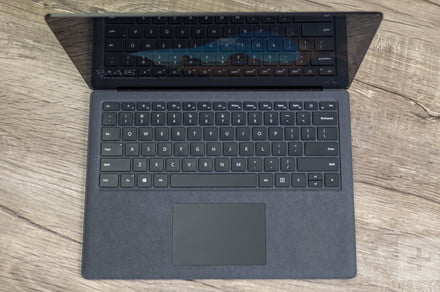A round of updates has made Windows 10 compatible with HDR10 and simplified the process to enable HDR, so your games, apps and movies should benefit more easily from turning this mode on.
Enabling HDR means that software will process the image and enhance detail and brightness. It’s another way to further improve playback, especially 4K playback that can benefit the most from an HDR boost. If you really want to push your results to the limit, then you need to enable HDR. Here’s how to do it.
As always, it’s a good idea to apply any updates to Windows 10 and the apps or games that you intend to use before beginning.
Step 1: Connect any necessary displays
HDR is particularly useful if you are connecting your Windows computer to an external display to play movies or games. If this is the case, start by connecting your HDR-compatible display to your Windows 10 computer. The better the connection quality, the better your HDR results will be. DisplayPort 1.4 and better is one of the best options. If that isn’t available, HDMI 2.0 and USB-C connections should suffice.
If you want to enable HDR right on a Windows 10 laptop or built-in display, you don’t have to worry about connecting a display — but you do have to make sure your laptop has the necessary display requirements. That includes resolution of at least 1080p, and a max brightness of 300 nits or more.
For both built-in and external displays, your Windows 10 computer must have a graphics card that supports PlayReady 3.0 hardware and 10-bit decoding capabilities. If your Windows computer is from 2017 or newer, you are probably fine. Otherwise, you may not be able to run HDR content.
Finally, if you are using a Windows 10 laptop, make sure it is plugged in before you begin. Windows 10’s settings are designed to only use HDR when the laptop is plugged in, because of the extra power drain. You can technically run HDR with the battery if you are willing to change some power settings, but it’s safer and easier to just make sure your laptop is plugged before you start your playback.
Step 2: Head to Display settings and pick the right display
Open up Windows 10 and head to Settings, which you can find in the Start menu, or simply by searching for it in the search bar.
One of the first icons you should see in Settings will be System. Select it.
In System, the top menu option should be Display. System naturally opens into the Display window, so you should already be there. The first option you should see in the Display window is an option that says Select and rearrange displays (as long as you have an additional display connected). Use the Identify and Detect buttons in this section as needed to find and select your HDR-compatible display.
If you are working to enable HDR on a built-in display, then you don’t need to worry about choosing the right display. Although, again, make sure that your computer is plugged in, updated, and compatible with HDR.
Step 3: Enable all HDR settings that you need
The section below Select and rearrange displays should be Windows HD color settings. Select this to go to the Windows HD color window.
The first section of this menu is Choose display. Make sure that the right display is selected if needed. The section after is Display capabilities. Here, make sure that Stream HDR video and Play HDR games and apps are both turned to Yes.
Strangely, while this enables HDR display capabilities, you also need to enable the HDR modes themselves. You should see selections for both Play HDR games and apps and Stream HDR video next. Make sure the buttons for both these sections are flipped to On.
Note that these instructions are for the latest version of Windows 10: If you have a later version, some of the sections may be labeled a little differently, although the same general instructions still apply!
Step 4: Make sure HDR is enabled on all your other devices
Joel Chokkattu/Digital Trends
Windows 10 may be ready to support HDR, but you need to make sure your other devices are ready, too. If you are using an external display, head to your display/TV settings and make sure that the HDR mode is also enabled. If you are playing a game, you should also check the game’s display settings to make sure that any HDR capabilities are enabled. Now you should be ready to go.
Editors’ Recommendations
- What is HDR10+? Everything you need to know about the new HDR format
- The best HDR monitors for 2019
- Tight on space? Here’s how to transfer photos from an iPhone to a computer
- HDR TV: What it is, and why you’ll want one
- XDR vs. HDR: Why Apple’s new 6K monitor is such a big deal

